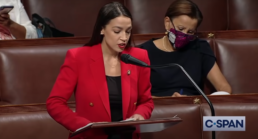The COVID-19 pandemic has forced all of us to ask a big question about how we communicate. Specifically, who are we communicating to, and why are we communicating?
Are we communicating to a small group of potential customers, with the goal of converting them into sales? Or does our communication serve some other, higher function?
COVID-19 has laid bare some very scary faults in our society. Our hospital system was near breaking even before the pandemic hit. Our middle class was financially under water. And half the country didn’t trust business or government to ‘do the right thing’.
Almost none of us requested this state of affairs, yet the decisions we’ve all made over the last decade led us to this situation.
These challenges are complex ‘collective action’ problems that are really challenging to solve. Climate change is another example. In order to prevent large-scale climate change, every country needs to reduce their greenhouse gas emissions. Yet, it’s much easier for any single country to not make these changes and free ride on the efforts of everyone else. And as a result, many countries aren’t committed, and collective action stalls.
Yet, the lockdown in response to COVID-19 was also a collective action problem, and one that we all took action on. It happened so effectively because everyone paid attention and there was widespread communication.
So, what does this mean for how we communicate?
We often have a goal in mind when we communicate. And that goal often revolves around increasing our sales – whether through announcing a new product, a new market expansion, or a new acquisition.
But perhaps there’s also a higher purpose that our communication can serve.
Perhaps when we communicate, we’re adding to a much larger collective story – one that talks about what we value as a society, how we shape our communities, and how we look out for one another.
Perhaps the shape of that story determines how our collective lives unfold: whether we build stronger levels of trust in our society, a more robust middle class, and are ready for the inevitable next pandemic.
It’s in all of our interest to get this story right. So, perhaps, when we communicate, we have a much larger goal, and much broader audience in mind.
Kapil Khimdas
Related Posts
September 29, 2020
The second wave is coming. Let’s remember the 6 lessons of the first wave
0 Comments3 Minutes


